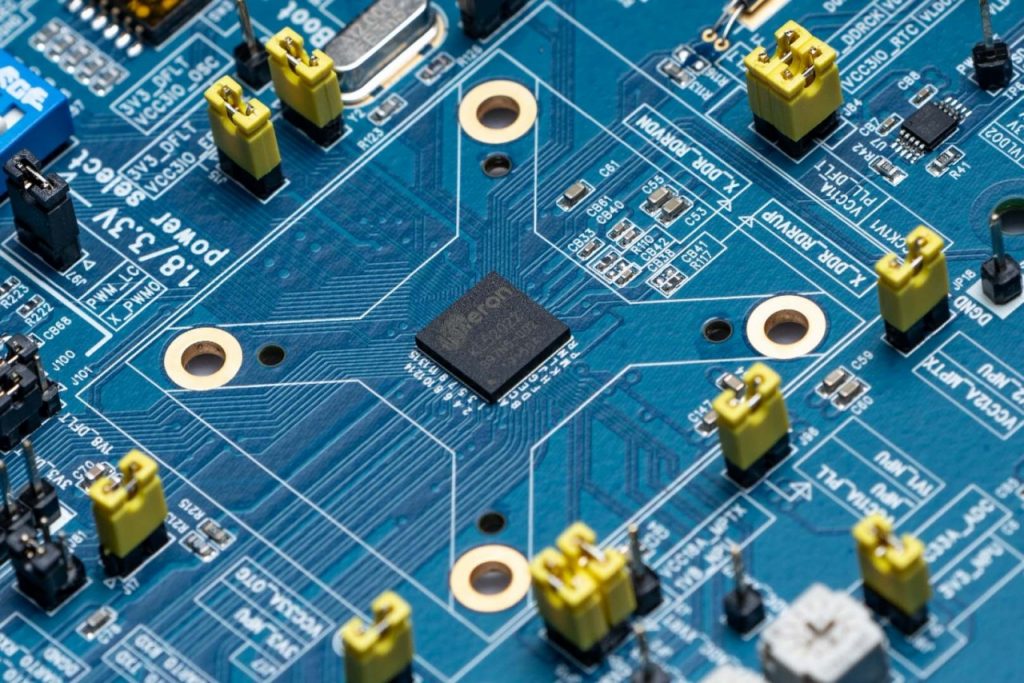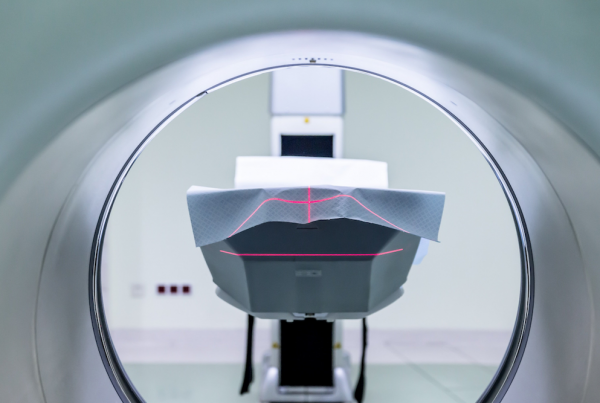
This is a new edition of my Age of AI Series, where I dissect how companies in various industries are already using machine learning (for tangible business value, not research projects). Want to get this newsletter? Sign up here!
In this email you’ll learn about 3 cool companies:
- Using ML to improve sports broadcasting: AISpotter
- The new generation of “real-time” voice assistants, so you can talk to apps like a friend: Speechly
- The most bleeding-edge chips for deep learning on the “edge”: Kneron
I’m constantly trying to bring you the absolute best AI-business content in the world. So if you have suggestions or feedback, please let me know!
2-Minute Summary (if you’re short on time)
- ML for Sports Broadcasting
When you watch a live football game, the feed usually comes from dozens of cameras, and produced by a big TV crew.
There’s a lot of real-time decision-making about which camera’s feed you should be looking at, highlights and replays, etc.
This naturally takes a lot of time and manual effort.
Turns out, you can use ML to automatically detect important events in the game from ALL camera feeds, and make very good video-cutting suggestions to the production team. Not only does it save effort, it also improves the viewer’s experience!
I met Anri Kivimäki, CEO of AISpotter. They’ve built video analysis technology not just for sports, but a variety of other use cases. Their secret sauce is how they do video analysis not in minutes, but less than 5 seconds! (Link)
- Real-time Voice Control
Voice assistants like Siri, Alexa etc have been huge recently. But voice tech isn’t being adopted quickly enough. Why?
Because they still feel slow and “unnatural” to use — it’s often like a walkie-talkie conversation where 2 people take turns to speak.
Eliminating this inherent delay, this discomfort in turn-based dialogue, is the holy grail of voice control technology — it would skyrocket the adoption rates and you’ll start seeing almost everything being controlled by voice.
I met Otto Söderlund, CEO of Speechly. They’ve built a patented system that allows real-time responsiveness to speech.
Definitely watch their demo to understand why it’s so cool. (Link)
- New-Age AI Chips
Edge AI includes everything from self-driving cars to drones, and smart doorbells to water filters. But to put AI models into millions of small devices, you need specialized semiconductor chips.
I met Albert Liu, the Founder and CEO of Kneron, an American-Taiwanese chip design and hardware platform company.
They claim to have the MOST bleeding-edge chip technology on the market for deploying deep learning models, as recognized by IEEE.
Running an AI chip company right now is freakin’ hard. Not only does it cost $100M just to play the game, BUT the semiconductor supply chains are also severely stressed. You should really listen to this. (Link)
Important Takeaways (5-minute read)
AI for sports broadcasting and real-time surveillance
How it works: AISpotter’s core technology is about detecting events of interest in a camera feed, which varies by nature.
For football, it could be a goal or a corner kick. For a bank’s video surveillance, it could be the drawing of a weapon or suspicious object etc.
To do this effectively, they train a unique machine learning model for each specific event they want to detect (as opposed to training one model for all of them), and in a live stream, each camera feed gets processed by every model in real-time.
Since video-analysis is computationally heavy, their secret sauce is SPEED — they claim they can detect events and feed them to the production team within 5 seconds of happening.
Cool things we discuss:
- What really happens inside a sports production room?
- How do you deal with racial or cultural BIAS in video surveillance using AI?
- AISpotter made a huge pivot due to Covid: why pivoting an ML company is very different and challenging, and lessons learned
- Video analytics for horse racing!
(And for anyone interested, Anri is fundraising for the next year!)
Real-time voice control
Evolution of speech models: The AI architecture of most voice assistants is very sequential – you first convert speech into text, then extract entities and sentiments from the text, use the entities and sentiments to “understand” the meaning of the speech, generate a response, and then do the whole thing in reverse to give the final output to the user in form of speech or text.
For each block in this stack, we’ve already achieved human parity and the toughest technical problems have been solved. But as humans, when we speak we correct ourselves all the time. Sequential systems are poor at handling natural speech, which is very incoherent and choppy.
Speechly’s claim to fame is that they’re redeveloped the stack so that it’s 5-10 times faster. As you start speaking, you don’t wait — the system immediately starts understanding and streaming to you visual feedback and/or responses.
They provide an API that developers can use to stick this functionality into all their applications, from e-commerce to flight booking to social media. They also heavily use synthetic data to fine-tune their system for new use cases as they arise.
Cool things we discuss:
- Current state of voice and NLP technology: strengths, limitations, etc
- Intellectual property in ML: Speechly’s decisions around what they patent and what they keep secret
- The “machine learning bootstrapping problem,” and how to fix it using synthetic data
New-age semiconductor chips for deep learning
Why we need special chips: Current chips, especially GPUs, are too bulky and inefficient to handle AI on the edge.
Analogy: Say you want to deliver a letter to your neighbour down the street. Current chips are like using a semi truck for that half-mile journey, while specialized chips are more like a bicycle. The bicycle will beat a semi-truck every single time.
Running a GPU server for a month could get you an electricity bill of $500. By using specialized chips built solely for deep learning, you can get a HUGE performance boost while also greatly reducing size, power consumption AND cost — the bill would only be $1! This is the order of magnitude of change we’re talking about.
Today you can’t just design chips, Kneron is also building an ecosystem of easy-to-use software and hardware tools that developers can use to build their own edge AI apps. So in that sense, they’re really a platform company.
Cool things we discuss:
- Current state of chip technology in the market
- “Reconfigurable” AI chips: what are they and why are they cool?
- How to design world-class AI chips: decisions around performance, power, and more
- Money: how much you need for an AI chip company, and why
- The current global crisis in semiconductor supply chains: what it’s really like!
Want this newsletter in your inbox? Sign up here!
Until next time,
Aman Y. Agarwal
Founder & CEO | Sanpram Transnational Corp.


